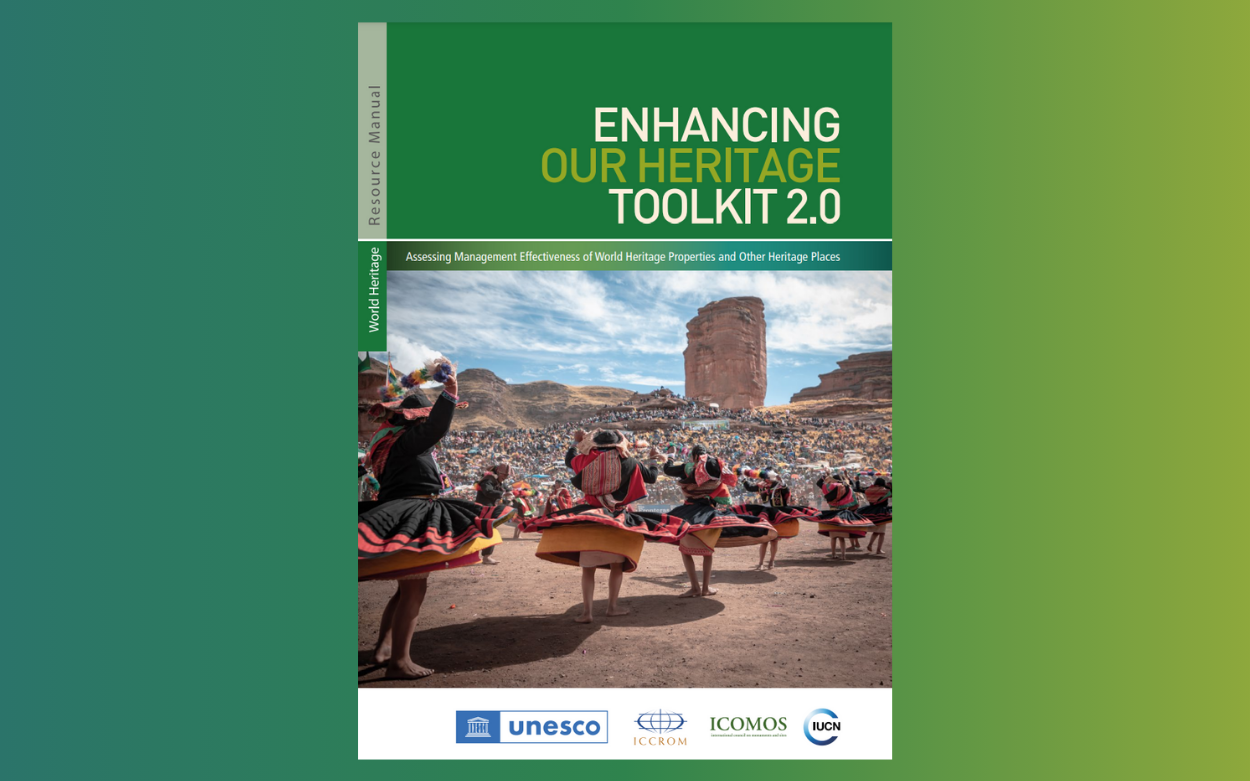New Tool to Assess the Effectiveness of World Heritage Management

UNESCO and the Advisory Bodies to the World Heritage Committee – ICCROM (International Centre for the Study of the Preservation and Restoration of Cultural Property), ICOMOS and IUCN (International Union for the Conservation of Nature) – have released a newly revised toolkit for assessing the effectiveness of management systems of World Heritage properties. Enhancing Our Heritage Toolkit 2.0 offers a World Heritage-specific methodology of management effectiveness assessment that can be applied to cultural, natural and mixed sites.
What is the toolkit for?
The Enhancing Our Heritage Toolkit 2.0 (EoH 2.0) provides a globally tested self-assessment methodology to support World Heritage managers and actors to evaluate management effectiveness in a World Heritage property or other heritage place. A management effectiveness assessment is the evaluation of how well a World Heritage property is being managed: primarily on the extent to which the heritage values of the property are being maintained and management objectives are being achieved. The Toolkit supports site managers in identifying ways to improve conservation practices, management processes and resource allocation, particularly if used before reviewing or updating management plans.

The 12 tools making up the toolkit offer simple and user-friendly methodologies that can be used collectively or separately to assess all key components of a management system. The results offer a base to improve conservation practices, management processes and resource allocation. Starting from the assessment of how well values and attributes are understood, the EoH 2.0 toolkit can be adapted and modified to analyze existing governance arrangements and management processes and monitor results that are (or are not) delivered. To facilitate the application on the ground, each tool is accompanied by a thorough description of how it can be used and a set of reflection questions.
Background
The first version of the Enhancing our Heritage Toolkit, published in 2008, was inspired by various management effectiveness methodologies developed since the 1980s, such as the “Framework for Assessing the Management Effectiveness of Protected Areas” of the IUCN World Commission on Protected Areas. Designed primarily for natural World Heritage properties, its potential use for cultural properties was acknowledged from the outset, and this adaptability has been further expanded and reinforced in the present revised edition as confirmed by ICOMOS through the work done under the Connecting Practice project in 2016-2017.
EoH 2.0 is the result of efforts to design a management effectiveness toolkit widely applicable to all World Heritage properties and other heritage places. It offers an adaptable framework that can be applied to the specific needs of each heritage place, remains linked to many other tools and methodologies, and reflects the latest developments of the World Heritage system and the global field of heritage conservation.
The Tool is the result of several years of collaboration, consultation and analysis between the three Advisory Bodies and UNESCO. This joint undertaking has been coordinated by the ICCROM-IUCN World Heritage Leadership programme in collaboration with ICOMOS and UNESCO with the continued generosity of the Swiss Federal Office for the Environment. The World Heritage Leadership programme thanks Switzerland for its steadfast support of and commitment to supporting World Heritage capacity building for better management and conservation of our World Heritage.
To learn more about how to use the Toolkit and get involved in the World Heritage Leadership programme’s capacity-building activities, contact this address.